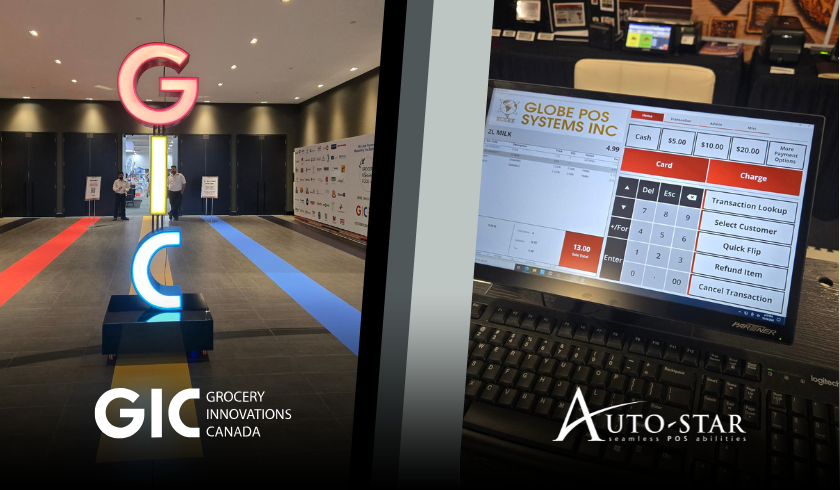Independent grocers often struggle to compete with big box stores and large chains that have extensive resources, wholesale buying power, and sophisticated inventory management systems. To level the playing field, grocers need access to solutions that minimize stockouts and optimize ordering processes through increased buying power, real-time inventory tracking, and automated warehouse ordering. For many independent grocers, the solution can be found in adding a retail warehouse.
Assess Your Needs and Goals for a Retail Warehouse
Before diving into setting up a Retail Warehouse, take the time to assess your business’s needs and long-term objectives. An independent grocer with high volumes of inventory turnover and long-term goals of adding additional locations could benefit in taking over more control of their supply chain by adopting additional warehouse space. Whether your store has inventory storage in the basement or back of your physical retail space, it’s worth asking: is your existing fulfillment space still doing the job? Can you find what you need when you need it?
Choose the Right Location for your Retail Warehouse
Location is paramount when establishing a Retail Warehouse. Look for a facility that offers convenient access for suppliers and distribution channels while also being easily accessible to your retail stores. Consider factors such as proximity to major transportation routes, availability of parking space, lease duration and local zoning regulations. A strategically located warehouse can significantly streamline logistics and reduce transportation costs.
Make sure to have pallet-sized racking for bulk storage, and pick-able shelving sized for human arms to select one item at a time to fulfill online shoppers’ orders if you have an eCommerce store. When determining your space needs, use the standard pallet size (48/40/48) to visualize how many you would need to fit into your space.
Invest in Technology and Automation
Modern warehousing relies heavily on technology and automation to optimize efficiency and accuracy. Independent grocers can also invest in inventory management software that integrates seamlessly with your retail POS system, allowing for real-time tracking of stock levels, automated order processing, and efficient warehouse operations. It is essential to have visibility into on-hand inventory levels, allowing for proactive inventory management and reducing the risk of overstocking or stock-outs.
Additionally, suggested ordering using the Minimum/Maximum method is an essential inventory feature that utilizes intelligent algorithms to determine optimal inventory levels based on historical data and current demand, ensuring that shelves are always stocked with the right products.
Optimize Layout and Storage
Designing an efficient layout and storage system is essential for maximizing the space and functionality of your Retail Outlet Warehouse. Utilize vertical storage solutions such as pallet racking and shelving systems to maximize floor space and organize inventory effectively. Implement efficient picking and packing processes to minimize handling time and improve order fulfillment speed. Look for a Bin Location Management feature in your software to organize warehouse inventory with precision by assigning bin locations and generating picking reports, streamlining the picking process for orders.
Focus on Safety and Compliance
Ensure that your Retail Outlet Warehouse meets all safety and regulatory compliance standards. Implement robust safety protocols and training programs to prevent accidents and injuries in the workplace. Adhere to food safety regulations and storage guidelines to maintain product quality and integrity. Regularly inspect equipment, storage facilities, and handling procedures to identify and address potential safety hazards.
Streamline Operations and Logistics
Effective warehouse management relies on streamlined operations and efficient logistics processes. Implement lean principles and continuous improvement initiatives to optimize workflows and eliminate waste. Develop clear Standard Operating Procedures (SOPs) for receiving, storage, picking, packing, and shipping processes to ensure consistency and efficiency across all warehouse operations. Utilizing a POS with the ability to fulfill orders directly from the warehouse to connected stores will eliminate the need for manual transfers and reduce transit times for customers.
Look for warehouse management software with features like EDI (Electronic Data Interchange) for invoices and receiving orders, and the ability to automatically create a picking order at the warehouse directly from your purchase order. This will drastically reduce the labor costs of placing and receiving orders into your inventory management system.
Embrace Continuous Improvement Across Locations
Establish a culture of continuous improvement within your Retail Warehouse. Encourage employee feedback and involvement in identifying process inefficiencies and implementing innovative solutions. Regularly evaluate key performance indicators (KPIs) such as order accuracy, inventory turnover, and fulfillment speed to measure progress and identify areas for improvement. If you have or are planning to open multiple locations, you will want to make sure your software has a Connected Stores Integration that will accept purchase orders from connected stores and provide stores with real-time visibility into warehouse inventory, enabling efficient replenishment and fulfillment processes. Having wholesale pricing management capabilities with your POS will also help manage wholesale pricing, quotes, invoices, and accounts receivable for B2B sales, facilitating seamless transactions with wholesale customers.
Staying Ahead of the Competition
In today’s fast-paced retail environment, staying ahead of the competition requires innovative solutions that empower grocers to optimize operations and deliver exceptional customer experiences. With real-time inventory tracking, streamlined ordering processes, and seamless integration with connected stores, grocers can take control of their inventory management and position themselves for success in the ever-evolving retail landscape.
Starting a Retail Warehouse is a strategic investment that can propel your grocery business to new heights of success and profitability. By following these essential tips and best practices, grocers can establish a well-organized, efficient, and customer-centric warehouse facility that supports their retail operations and drives business growth. With careful planning, investment in technology, and a commitment to excellence, grocers can unlock the full potential of their Retail Outlet Warehouse and thrive in today’s competitive retail landscape.












